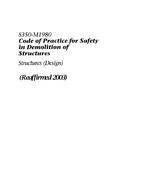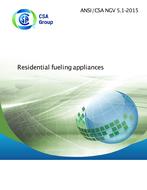Preface
This is the first edition of the CSA B140.1 Series, Atomizing- and vapourizing-type oil burners. It replaces the following CSA Group Standards: a) CSA B140.1:66, Vapourizing-type oil burners; b) CSA B140.2.1:10, Atomizing-type oil burners; and c) CSA B140.2.2:71, Pressure atomizing oil burner nozzles. The above-mentioned Standards have been amalgamated with the intent to create a single document providing requirements for oil burner construction and performance, as well as requirements for oil burner components.
This Series contains two Standards:
– CSA B140.1.1 – Atomizing-type oil burners, which consists of the requirements from CSA B140.2.1 (atomizing-type oil burners) and CSA B140.2.2 (pressure atomizing oil burner nozzles); and
– CSA B140.1.2 – Vapourizing-type oil burners, which includes the requirements from CSA B140.1 (vapourizing-type oil burners). This Standard should be read in conjunction with CSA B140.0, Oil-burning equipment: General requirements. The major changes from the previous editions of CSA B140.2.1 and CSA B140.2.2, now designated CSA B140.1.1, include the following:
– throughout the Standard, some rewording has been done for clarity;
– the scope has been expanded to include the requirements for atomizing nozzles, tubes, and cups (Clause 5.13);
– new definitions have been added;
– the requirement for electrical features has been updated to reference CSA C22.2 No. 60335-2-102, which replaces CSA C22.2 No. 3;
– a new requirement for automatic electrical burner control systems has been added to comply with the requirements of ANSI Z21.20
– CAN/CSA-C22.2 No. 60730-2-5;
– tables have been relocated from the end of the Standard to the applicable clause;
– the Clause 5.13.2 on atomizing nozzles now includes the requirements from CSA B140.2.2, with the following major changes:
– the clause title has been changed from “Pressure atomizing oil burner nozzles” to “Atomizing nozzles”;
– the notes regarding markings on the nozzles have been deleted; and
– SI (metric) units have been added;
– the following changes have been made to Table 2:
– the times for the trial for ignition period and the flame failure response time for appliances with an input rate less than or equal to 11.4 L/h (3.0 US gph) have been divided into two categories: one with an input rate less than or equal to 3.78 L/h (1.0 US gph) and one with an input rate >3.78 L/h (1.0 US gph) and less than or equal to 11.4 L/h (3.0 US gph);
– the flame failure response time for some appliances with an input rate between 11.4 L/h (3.0 US gph) and 26.5 L/h (7.0 US gph) has been changed from 3 to 4 s; and
– the flame failure response time for appliances with an input rate > 26.5 L/h (7.0 US gph) and less than or equal to 76 L/h (20.0 US gph) has been changed from 3 to 4 s;
– when testing pumps, the grade of fuel(s) required to be used is now the grade for which the pump is designed or intended. Previously, the lightest-grade fuel with the lowest viscosity was required to be used;
– the clause on alternate fuel grades for testing has been deleted. Clause 6.8.14 has been added for wetted seals and gaskets exposed to grade B6-B20;
– the method of test for hydrostatic pressure leakage has been changed;
– the pressure that components of fuel pumps or units are subjected to during the static pressure leakage test has been changed;
– the mercurous nitrate immersion test procedure now references UL 125 instead of ASTM B154;
– the test voltages for ignition have been changed from actual values to a percentage of the nominal voltage. Actual voltage has not changed;
– the timings for flame failure response time have been provided in Table 2 only; and
– the marking requirements have been changed to comply with CSA C22.2 No. 60355-2-102 instead of CSA C22.2 No. 3. The major changes from the previous edition of CSA B140.1, now designated CSA B140.1.2, include the following:
– throughout the Standard, some rewording has been done for clarity;
– some of the caution statements for labels have been reworded;
– new definitions have been added;
– the maximum input rate for vapourizing-type oil burners has been limited to 4.5 L/h (1.2 US gph). Previously, it was unlimited;
– the requirement for electrical features has been updated to reference CSA C22.2 No. 60335-2-102, which replaces CSA C22.2 No. 3;
– a new requirement has been added that strainers comply with UL 331;
– new requirements have been added for constant levelling devices;
– new requirements have been added for manually lighted burners;
– a maximum time limit of 5 min has been added for the ignition of a manually lighted burner;
– additional requirements on when and how to take a smoke-spot test have been added;
– the maximum allowable smoke spot has been changed from a number 7 to a number 2;
– additional performance criteria have been added for relighting a hot burner;
– production and factory tests have been added; and
– a new annex (Annex A) containing French translations for specified markings has been added.
This Standard is considered suitable for use for conformity assessment within the stated scope of the Standard. This Standard was prepared by the Technical Committee on Oil-Burning Appliance Standards, under the jurisdiction of the Strategic Steering Committee on Fuels and Appliances, and has been formally approved by the Technical Committee. This Standard has been developed in compliance with Standards Council of Canada requirements for National Standards of Canada. It has been published as a National Standard of Canada by CSA Group.
——————————————————————————————————————————–
CSA B140.1.1:22 -Atomizing-type oil burners
Scope
1.1 Application This Standard applies to a) oil burners of the atomizing type (irrespective of size, firing rate, or grade* of fuel oil) that are designed primarily for installation in warm-air, hot-water, and steam-heating equipment; * The grade of fuel oil should be as specified in CSA B140.0, except for grade B6-B20, which is specified in ASTM D396. b) atomizing-type oil burners that are a part of an assembly in appliances such as ovens, heaters, ranges, and special furnaces; c) integral atomizing-type burners, where they are part of a complete appliance; and d) certain components and accessories (e.g., fuel units and combustion safety controls) for atomizing-type oil burners.
1.2 Intent This Standard states the minimum requirements for nozzles that are designed for installation in oil burners of the pressure atomizing type. This Standard includes requirements for construction, marking, and performance to provide consistent operation of nozzles. The intent of the requirements is to determine the consistency of flow rate, nominal spray angle, and nominal spray pattern for any subsequent production lot of similarly identified nozzles to an original lot, rather than to compare these characteristics to any absolute or specified values. The requirements apply to nozzles that are a) of the capacity range up to and including 7.6 L/h (2 US gph); and b) primarily intended for use with fuel oil not heavier than grade No. 2, and for fuel oils of grade B6-B20. Note: Nozzles designed for use in a specific burner may also be evaluated to the requirements in this Standard.
1.3 Exclusion This Standard does not apply to manually lighted atomizing burners.
1.4 Terminology In this Standard, “shall” is used to express a requirement, i.e., a provision that the user is obliged to satisfy in order to comply with the Standard; “should” is used to express a recommendation or that which is advised but not required; and “may” is used to express an option or that which is permissible within the limits of the Standard. Notes accompanying clauses do not include requirements or alternative requirements; the purpose of a note accompanying a clause is to separate from the text explanatory or informative material. Notes to tables and figures are considered part of the table or figure and may be written as requirements. Annexes are designated normative (mandatory) or informative (non-mandatory) to define their application.
1.5 Units of measurement The values given in SI units are the units of record for the purposes of this Standard. The values given in parentheses are for information and comparison only.
——————————————————————————————————————————
CSA B140.1.2:22 – Vapourizing-type oil burners
Scope
1.1 Application This Standard applies to a) vapourizing-type oil-burner assemblies with a fuel input of 4.5 L/h (1.2 US gph) or less, intended for use with either kerosene, as described in CAN/CGSB-3.3, or No. 1 or No. 2 fuel oil, as described in CAN/CGSB-3.2; b) vapourizing-type oil burners that are a part of an assembly in appliances such as ovens, heaters, ranges, and special furnaces; and c) certain components and accessories (e.g., fuel units and combustion safety controls) for vapourizing-type oil burners.
1.2 Intent In this Standard, “shall” is used to express a requirement, i.e., a provision that the user is obliged to satisfy in order to comply with the Standard; “should” is used to express a recommendation or that which is advised but not required; and “may” is used to express an option or that which is permissible within the limits of the Standard. Notes accompanying clauses do not include requirements or alternative requirements; the purpose of a note accompanying a clause is to separate from the text explanatory or informative material. Notes to tables and figures are considered part of the table or figure and may be written as requirements. Annexes are designated normative (mandatory) or informative (non-mandatory) to define their application.
1.3 Units of measurement The values given in SI units are the units of record for the purposes of this Standard. The values given in parentheses are for information and comparison only.
Product Details
- Edition:
- 1st
- Published:
- 07/06/2022
- ISBN(s):
- 9781488342271
- Number of Pages:
- 74
- File Size:
- 1 file , 930 KB
- Product Code(s):
- 2429940, 2429940
- Note:
- This product is unavailable in Russia, Ukraine, Belarus


